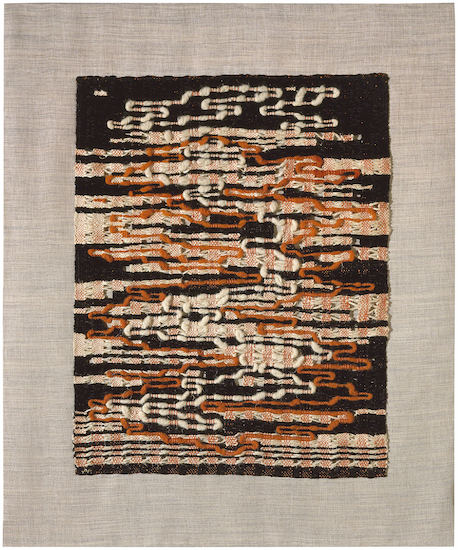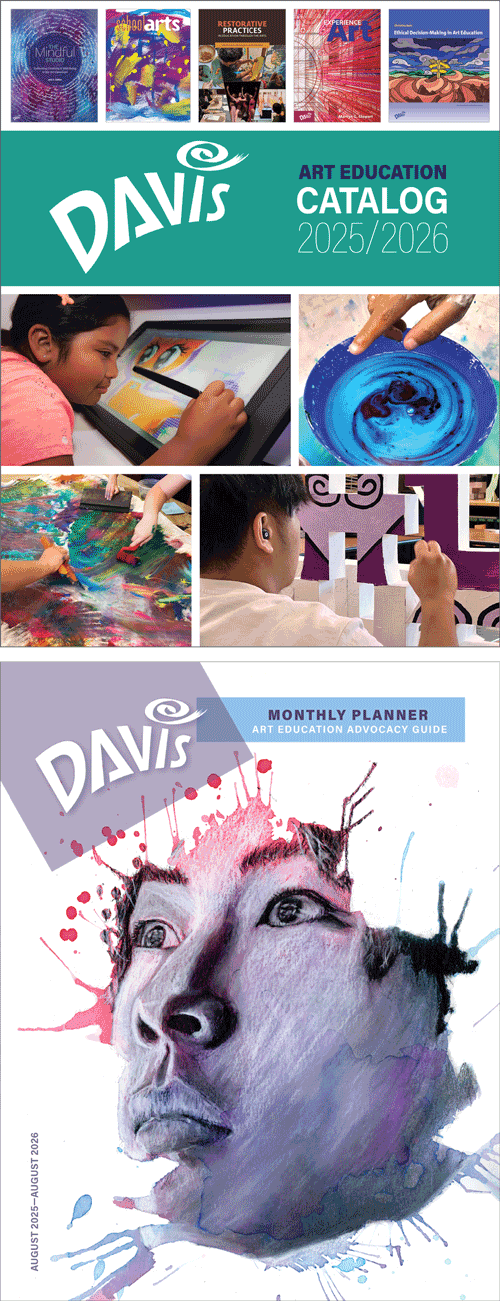Artist Birthday: Anni Albers
Anni Albers is notable as one of the class of Bauhaus fiber artists who helped elevate weaving and other fiber disciplines to the status of fine art in Western art. After moving to the United States, she became an educator training the next generation of fiber artists who matured in the 1960s during the Feminist Art Movement.
Artist Birthday for 12 June: Anni Albers (1899–1994, United States, born Germany)
Anni Albers is one of the primary forces in securing recognition of fiber arts as fine art.
 |
| Anni Albers, Under Way, 1963. Cotton, linen and wool mounted on wood, 73.8 x 61.3 cm. Hirshhorn Museum and Sculpture Garden, Smithsonian Institution, Washington, DC. © 2025 Josef and Anni Albers Foundation / Artists Rights Society (ARS), New York. (SI-434alars) |
Albers had a fascination for the textiles of ancient Peru, a fascination that persisted after she emigrated to the United States in 1933. She was fascinated by the unusual zig-zags, maze-like patterns, and abstracted faces. Many of these made their way into her work, such as the zig-zag in this piece.
Even while still at Bauhaus, Albers never stuck with purely traditional loom techniques. During the late 1950s and 1960s, she produced a number of works that incorporated bunched groups of thread enmeshed into the warp in patterns that defied the strictly vertical-horizontal orientation of the loom. At the same time she incorporated the linked threads, she also added knots as artistic elements. She also incorporated other unusual materials in a similar way, including corn kernels, grass, and twisted paper.
During the late 1800s, there was a widespread rebellion against the conservative academic art institutions that proscribed only one way of doing things, either stylistically or technically. They were also not welcoming to women or minority membership, and it was difficult to get patronage without associating with these institutions. The rebellion of the Impressionist is one example of this phenomenon.
Another example is the formation of groups of artists who wanted to return the quality of art to pre-industrial times. The Vienna Werkstätte in Austria, Arts and Crafts Movement in England and America, and the international movement of Art Nouveau are all examples of this phenomenon. A major concern of all of these movements was the integration of all arts and functional objects. Germany before World War I (1914–1918) had many avant-garde groups of artists who rejected past academic practices.
Out of the civil wars, ruined economy, and social strife that ensued in Germany after World War I , a revolution in art was born. The new school was founded in Weimar, and directed by Walter Gropius (1883–1969), an architect who espoused socialist ideologies. Socialist ideas included the interdisciplinary combination of fine art and industrial design, a search for universals of form, and a promotion of aesthetics in industrial production. Socialism also promoted coed education (in all fields except glass and architecture), a first in post-war Germany.
Anni Albers, born Annelise Else Frieda Fleischmann in Berlin, was the child of a publishing heir and furniture maker. She painted as a youth, studying under Impressionist artists 1916 to 1919. Discouraged from painting by a thoughtful critique, she decided to attend art school. She made her way to Bauhaus in 1922.
The first Christmas after the founding of the school (1919), the students made decorations out of textile scraps and sold them at a Dada fair in Weimar. This venture was so successful that textiles became the first workshop of the Bauhaus. Although the textiles classes were composed almost entirely of female students, they aimed to produce work that would elevate weaving to the level of a fine art, rather than a craft that was “women’s work.”
From the very beginning, the weaving of the Bauhaus reflected the abstract aesthetic present in Bauhaus painting. Students were encouraged to experiment with all of the concurrent abstract styles, most of which involved some sort of cubistic, geometric abstraction. The weavings from the Bauhaus gained a market in several German firms that produced materials for furniture, automobiles and household furnishings such as rugs, curtains and wall hangings. In this way, abstraction was introduced to a broad section of the public.
Albers began training under Gunta Stölzl (1897–1983 German/Swiss) and soon developed a passion for the tactile construction challenges of fiber arts. The principle inspirations for Albers’ work were pre-Columbian textiles, and the painted works of Paul Klee (1879–1970, Swiss), one of Albers’ teachers at the Bauhaus.
Correlations to Davis programs: Explorations in Art 2E Grade 3: Unit 6 Review; Davis Collections: Fiber as Art

Comments